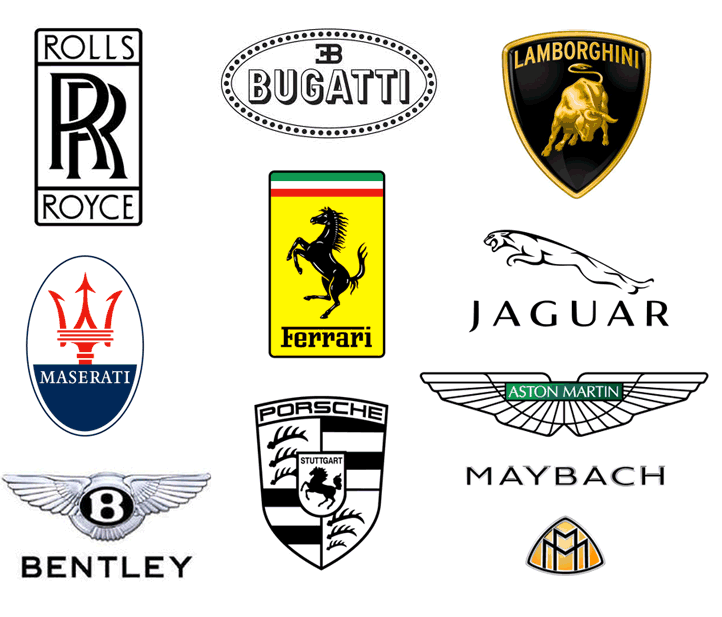|
|
|

Automobile manufacturers market specific makes and models that are targeted at particular socio-economic classes, and thus "social status came to be associated more with a particular vehicle than ownership of a car per se." Therefore, automakers differentiate among their product lines in "collusion" with the car-buying public. While a high price is the most frequent factor, it is "styling, engineering, and even public opinion which cars had the highest and lowest status associated with them."
Every era in automobile history has had "a group of car marques and models that have been expensive to purchase, due to their alleged superiority of their design and engineering". Aimed at wealthy buyers, such automobiles might be generically be termed luxury cars." This term is also used for unique vehicles produced during "an era when luxury was individualistic consideration, and coachwork could be tailored to an owner like a bespoke suit." Although there is considerable literature about specific marques, there is a lack of systematic and scholarly work that "analyzes the luxury car phenomenon itself."
Luxury vehicle makers may either be stand-alone companies in their own right, such as BMW and Mercedes, or a division/subsidiary of a mass market automaker (e.g., Lexus belongs to Toyota). Badge engineering may often be used for economical cost savings, such as most Lincoln vehicles being based on Ford.
Though widely used, the term luxury is broad and highly variable. It is a perceptual, conditional and subjective attribute and may be understood differently by different people: "What is a luxury car to some... may be 'ordinary' to others."
History
In the United States luxury market, Cadillac and Lincoln had been long the best-selling and second best-selling luxury brands until 1998, when they were overtaken by Japanese and German brands. Since the 2000s, with the Cadillac CTS, the marque has seen a resurgence in sales and brand value. Ford's Lincoln, which had seen sales fall as a result of an aging lineup, has attempted to return that luxury marque to competitiveness, by releasing new models such as the Lincoln MKS, as well as divesting itself of its other Premier Automotive Group brands. Mercedes-Benz and BMW were the top-selling luxury import until 1991, when they were overtaken by Lexus. Since 2000, Lexus has been the number-one-selling luxury car marque in the U.S.
Since the 1980s, a host of new manufacturers have entered the luxury market to challenge the traditional players. The three major Japanese auto manufacturers, Honda, Toyota, and Nissan, created their respective luxury brands particularly for the US. As a result of voluntary export restraintsimposed in 1981, these manufacturers were limited to a number of vehicles they could export. While these companies sidestepped this by establishing US production facilities for mass market vehicles, their home factories soon begun producing higher-priced cars as they carried a greater profit margin per car. Acura was launched in 1986, while Lexus and Infiniti were unveiled in 1989. By 1992, these three divisions had sales of over US$3.5 billion, using lower prices and innovation to take market share from both domestic (Cadillac, Lincoln) and the European (Mercedes, Volvo, BMW, Audi and Jaguar) luxury car makers. Hyundai had recently released the Genesis and theEquus, hoping to repeat the same strategy of undercutting their established competitors.
The Late-2000s recession was the first time since the Great Depression of the 1930s that the luxury car market suffered considerably, something not seen in previous economic downturns. Many such customers saw their net worth decline following the collapse in financial markets and real-estate values. For instance, some of the steepest dropoffs came at the high end, including the BMW 7 Series and Rolls Royce Phantom, and Mercedes-Benz unexpectedly dropped the starting price of its all-new 2010 E-Class. The unusually sharp decline in luxury car sales have led observers to believe that there is a fundamental shift and reshaping of the luxury automotive market, with one industry official suggesting that the marques no longer command the premiums that they used to, and another saying that conspicuous consumption was no longer attractive in poor economic conditions. Additionally, mainstream brands have been able to offer amenities and devices such as leather, wood, and anti-lock brakes, previously found only on luxury cars, as the costs decline.
However, luxury vehicle sales have not collapsed as much as their non-luxury counterparts. Luxury vehicle marques generally benefited from financially healthier dealerships, better leasing and certified pre-owned programs and loyal customers, so sales are expected to rebound more quickly than mass market cars. Others note that there is growing interest in luxury vehicles from emerging markets such as China and Russia.
The entry-level luxury segment has been very competitive, and there has been price-overlapping with well-equipped non-luxury cars. For instance, in Canada, several luxury manufacturers set sales records in August 2009, due mostly to aggressive incentives on entry-level luxury vehicles. In September 2009, BMW, Mercedes-Benz, Lexus and Audi all saw their Canadian sales increase by more than 10 per cent compared to a year earlier, despite overall Canadian auto sales being down 3.5 per cent compared to September 2008. The head of Mercedes-Benz Canada suggested that the brand "has been able to attract 'middle-class' consumers even during the recession because of the sense that owning a Mercedes comes with 'membership in a club'." BMW Canada's chief said luxury cars continued to be attractive, "I think due to new product offensives and due to new design and due to the fact that we are the benchmark in all areas when it comes to fuel efficiency... that together stimulates a lot of the market". BMW has managed to remain profitable in 2009 while other competitors were posting losses, by scaling down production quickly to avoid cash burn through bloated inventories.
In 2010, BMW was the best-selling luxury vehicle manufacturer by sales, ahead of rivals Audi AG and Daimler AG's Mercedes-Benz marque.